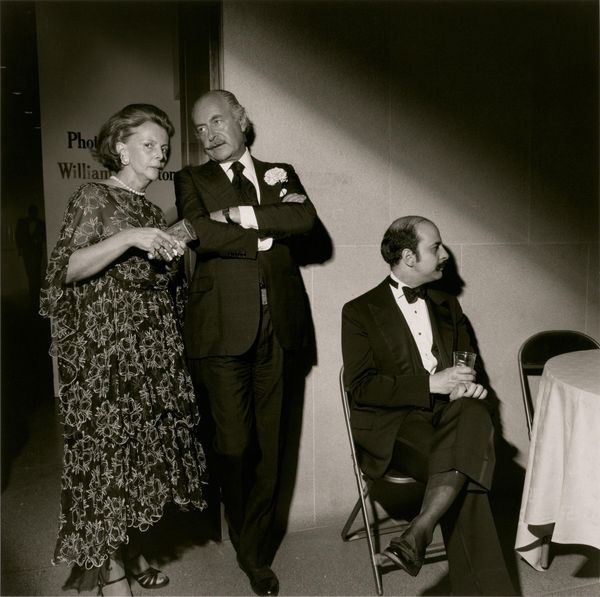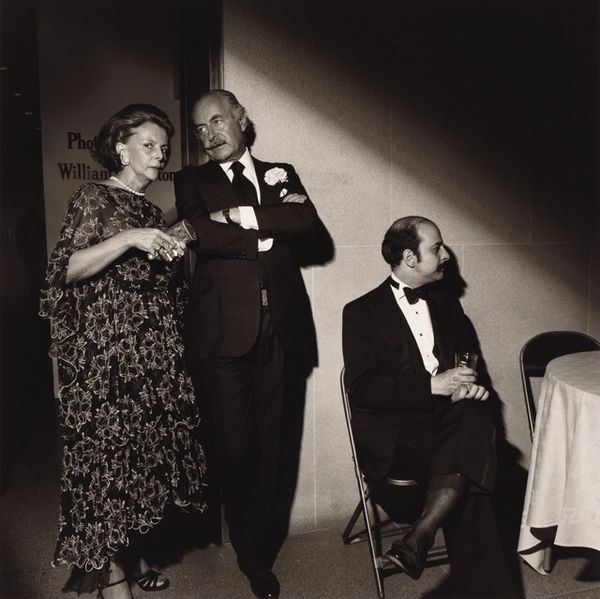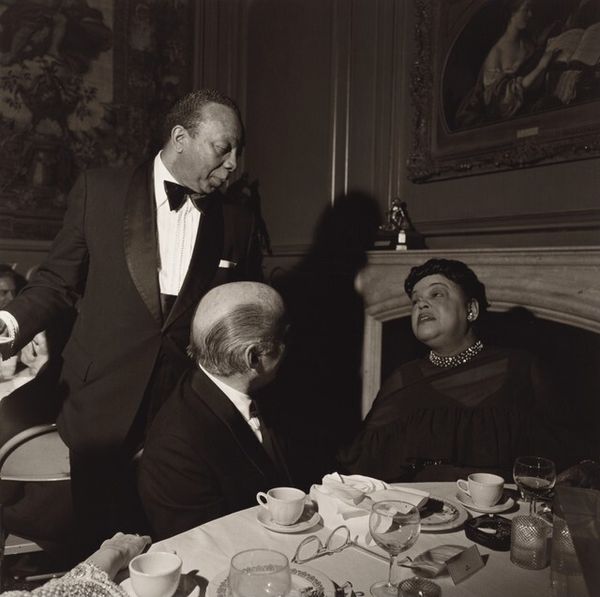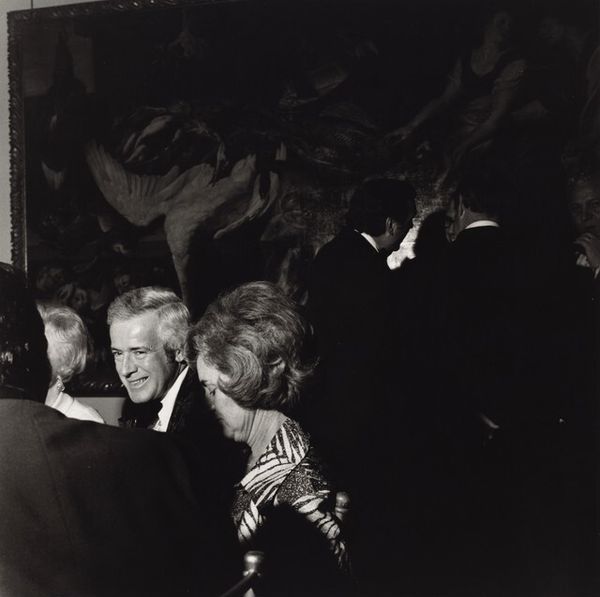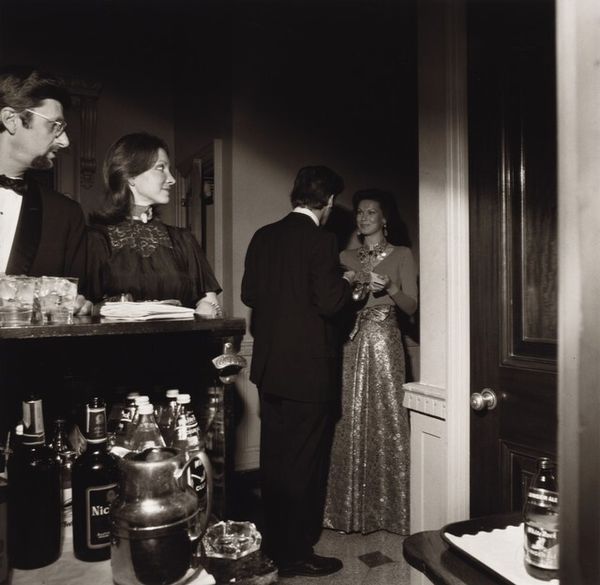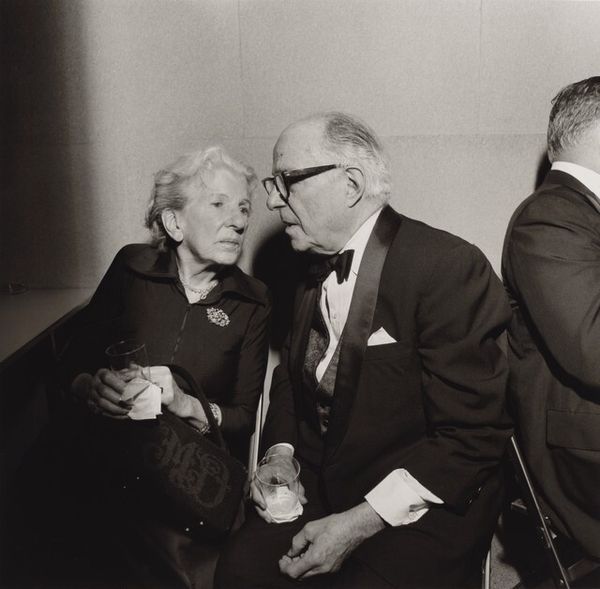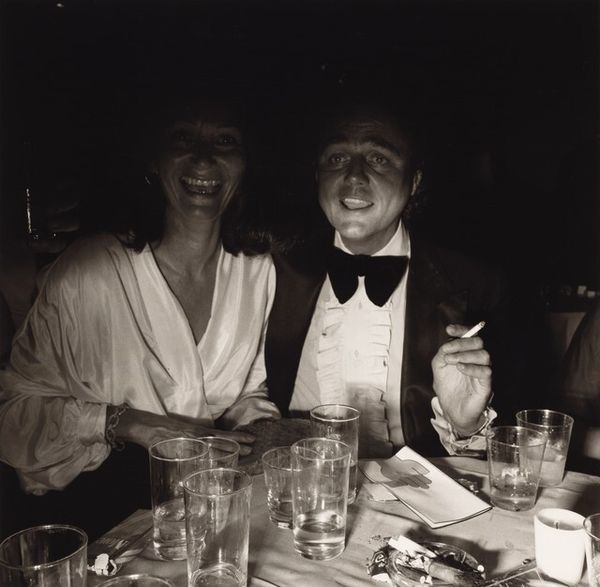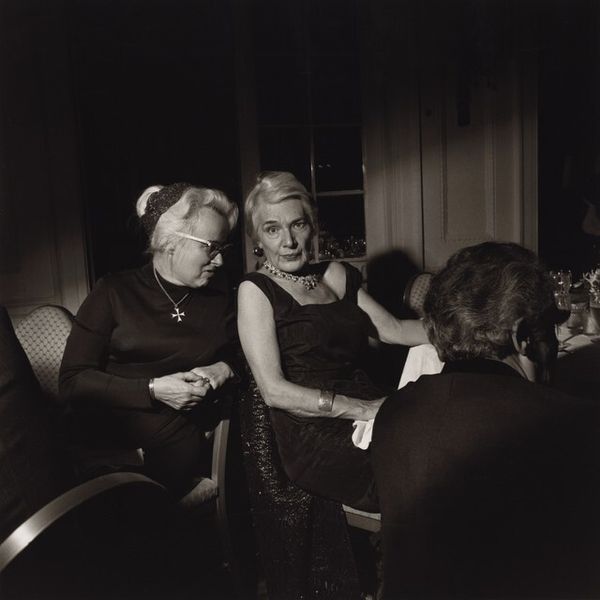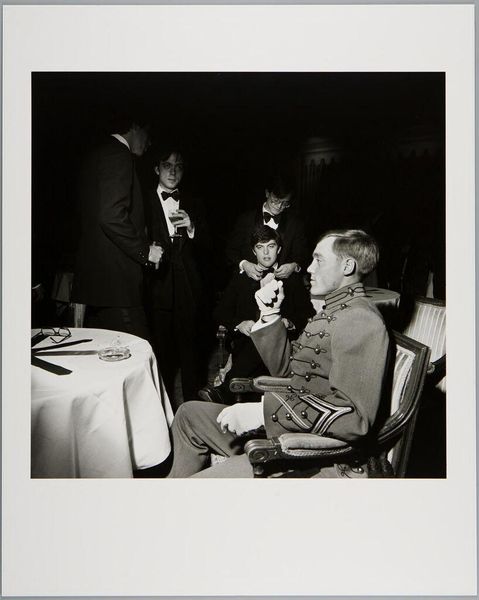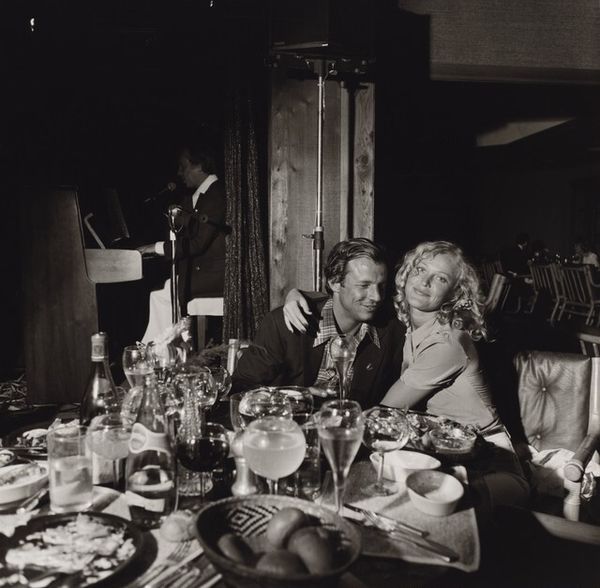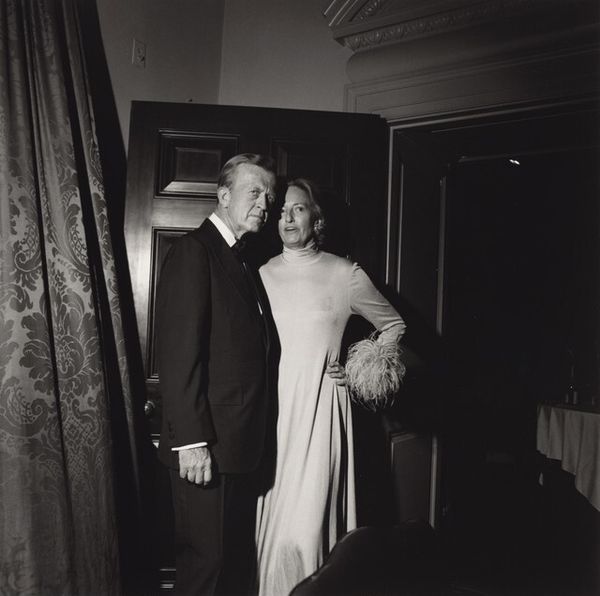
photography, gelatin-silver-print
#
portrait
#
photorealism
#
wedding photograph
#
black and white photography
#
wedding photography
#
black and white format
#
social-realism
#
archive photography
#
photography
#
historical photography
#
black and white theme
#
old-timey
#
black and white
#
gelatin-silver-print
#
monochrome photography
Dimensions: image: 35 × 35.4 cm (13 3/4 × 13 15/16 in.) sheet: 50.8 × 40.64 cm (20 × 16 in.)
Copyright: National Gallery of Art: CC0 1.0
Editor: This gelatin silver print is titled "Russian Orthodox Fund, New York City" by Larry Fink, and it was taken in 1975. It definitely has a stark, almost confrontational feel, given the direct gazes and high contrast. What can you tell me about it? Curator: Fink often captured social events, and this image, with its depiction of what seems to be a high-society gathering, invites a critical look at the socio-economic structures of New York in the '70s. Note the title referring to the Russian Orthodox Fund juxtaposed with the visible wealth. What commentary do you think Fink is making? Editor: Maybe about the church and money? Are we supposed to read something into their expressions, a certain... dissatisfaction? Curator: Precisely. Consider the context: 1975 was a time of economic downturn in NYC. Images like this pushed back against idealized representations of wealth and power. Photography like this became a vehicle for social commentary, questioning the roles of institutions and the distribution of resources. Editor: So it’s not just a picture of a fancy party, it's more about power, money and class dynamics within a specific time and place? Curator: Exactly. Fink uses the seemingly neutral gaze of the camera to expose the subtle tensions within these social strata, prompting viewers to question the relationship between philanthropy, power, and social responsibility. The photograph becomes a historical document loaded with cultural meaning. Editor: It’s interesting how a seemingly straightforward image can have such layers of social commentary woven into it. It makes me think about the role of the photographer in shaping our perceptions. Curator: And the institutions, like galleries and museums, that bring such works to the public sphere, continually reshaping our understanding of that past.
Comments
No comments
Be the first to comment and join the conversation on the ultimate creative platform.

